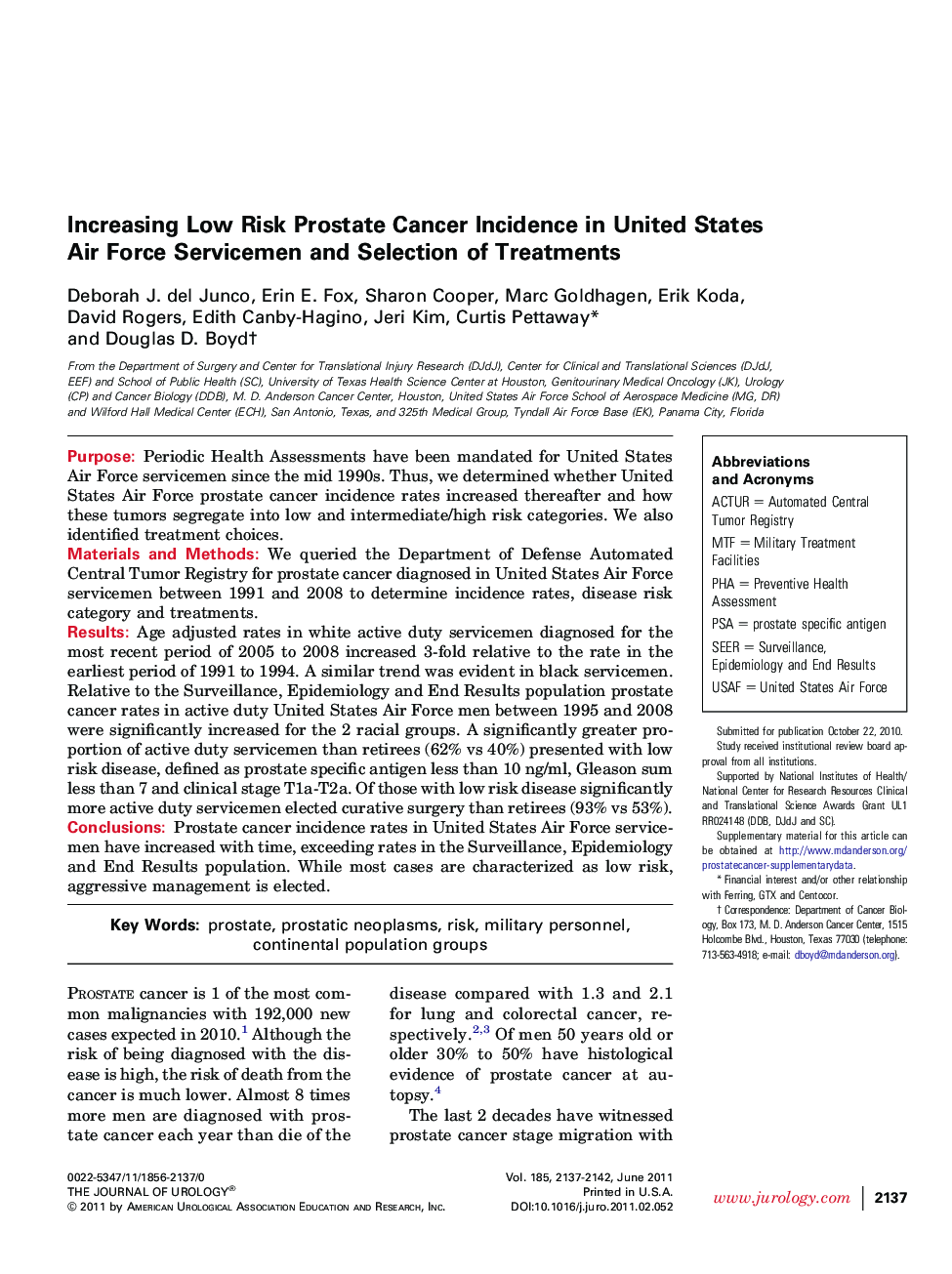| Article ID | Journal | Published Year | Pages | File Type |
|---|---|---|---|---|
| 3869800 | The Journal of Urology | 2011 | 6 Pages |
PurposePeriodic Health Assessments have been mandated for United States Air Force servicemen since the mid 1990s. Thus, we determined whether United States Air Force prostate cancer incidence rates increased thereafter and how these tumors segregate into low and intermediate/high risk categories. We also identified treatment choices.Materials and MethodsWe queried the Department of Defense Automated Central Tumor Registry for prostate cancer diagnosed in United States Air Force servicemen between 1991 and 2008 to determine incidence rates, disease risk category and treatments.ResultsAge adjusted rates in white active duty servicemen diagnosed for the most recent period of 2005 to 2008 increased 3-fold relative to the rate in the earliest period of 1991 to 1994. A similar trend was evident in black servicemen. Relative to the Surveillance, Epidemiology and End Results population prostate cancer rates in active duty United States Air Force men between 1995 and 2008 were significantly increased for the 2 racial groups. A significantly greater proportion of active duty servicemen than retirees (62% vs 40%) presented with low risk disease, defined as prostate specific antigen less than 10 ng/ml, Gleason sum less than 7 and clinical stage T1a-T2a. Of those with low risk disease significantly more active duty servicemen elected curative surgery than retirees (93% vs 53%).ConclusionsProstate cancer incidence rates in United States Air Force servicemen have increased with time, exceeding rates in the Surveillance, Epidemiology and End Results population. While most cases are characterized as low risk, aggressive management is elected.
